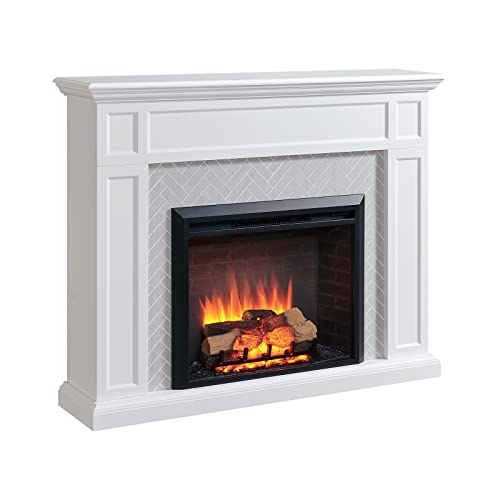15 Amazing Facts About Outdoor Stoves Online
Best Value Fireplaces: An In-Depth Guide
The fireplace has long been considered the heart of a home, providing heat, atmosphere, and a centerpiece for celebrations. Nevertheless, navigating through Best Fireplaces Online can be frustrating, specifically with budget plan constraints in mind. This post presents an informative guide on the very best value fireplaces, detailing their types, functions, and benefits to assist homeowners make a sensible option.
Kinds of Fireplaces
Fireplaces can be found in a range of designs and types, each with various attributes, costs, and advantages. Here's a comprehensive look at the most common types of fireplaces offered in the market today.
Kind of Fireplace
Description
Average Cost
Pros
Cons
Wood-Burning
Burn logs to create heat and atmosphere.
₤ 1,500 – ₤ 5,000
Genuine experience, natural heat
Needs regular upkeep, less efficient
Gas Fireplaces
Uses gas or propane to produce heat.
₤ 2,000 – ₤ 5,000
Easy to utilize, cleaner than wood
Minimal to gas supply, setup costs
Electric Fireplaces
Simulates flames with LED technology and produces heat through electrical energy.
₤ 200 – ₤ 3,000
Easy installation, installation flexibility
Less authentic feel, higher operating expense
Pellet Stoves
Use compressed wood or biomass pellets, offering an environment-friendly choice.
₤ 3,000 – ₤ 4,500
Efficient, low emissions
Needs electrical energy to operate, requires storage for pellets
Ethanol Fireplaces
Burns ethanol fuel, producing flames that don't require a chimney.
₤ 300 – ₤ 2,500
No vents needed, portable
Higher fuel cost, security issues
Aspects to Consider When Choosing a Fireplace
Selecting the best fireplace is not almost aesthetics; it also involves useful factors to consider. Here are crucial aspects to remember:
1. Budget plan
- Identify how much you want to invest. Elegant Fireplaces in mind that installation and upkeep costs can build up.
2. Space and Size
- Guarantee the fireplace fits well within the room, thinking about both the area readily available and the heating requirements.
3. Fuel Type
- Choose on the fuel source based upon availability, expense, and the type of atmosphere you want to attain.
4. Efficiency
- Choose for systems with high-efficiency ratings to guarantee you are getting the most value for your cash in terms of heat output.
5. Aesthetic Appeal
- Choose a style and design that complements existing decor and enhances the general charm of the area.
6. Regulations
- Understand regional guidelines, permits, and building regulations that might affect your fireplace installation.
Top Best Value Fireplaces
Based on customer reviews, professional opinions, and overall value for cash, here are a few of the very best value fireplaces presently offered in the market:
1. DuraVent Pellet Stove
- Type: Pellet
- Typical Cost: ₤ 2,000
- Emphasizes: Highly efficient with low emissions, making it an outstanding option for environmentally-conscious house owners.
2. Napoleon B36NTR-1
- Type: Gas
- Typical Cost: ₤ 2,500
- Highlights: This fireplace is aesthetically attractive and extremely efficient, with a smooth design and adjustable flame.
3. Duraflame Electric Heater Stove
- Type: Electric
- Typical Cost: ₤ 200
- Emphasizes: Affordable and portable, perfect for smaller spaces or adding atmosphere to a space without irreversible setup.
4. Genuine Flame Juliet Gel Fireplace
- Type: Ethanol
- Typical Cost: ₤ 300
- Highlights: A stylish choice for modern areas that requires no venting, making it flexible and easy to install.
5. Vogelzang VG5790
- Type: Wood-Burning
- Typical Cost: ₤ 800
- Highlights: Offers a traditional wood-burning experience with a sleek modern design, perfect for those who treasure the traditional ambiance.
Regularly Asked Questions (FAQs)
Q1: What is the most cost-effective fireplace choice?
A1: Electric fireplaces tend to be the most affordable in terms of initial purchase price and installation, however can have greater operating costs compared to gas or pellet systems.
Q2: Are gas fireplaces much safer than wood-burning fireplaces?
A2: Yes, gas fireplaces generally produce less emissions and present a lower risk of chimney fires as they do not produce creosote like wood-burning units.
Q3: Can I set up a fireplace myself?
A3: While some electric fireplaces enable simple self-installation, other types, specifically gas and wood-burning designs, typically require expert installation due to venting and security concerns.
Q4: How do I keep my fireplace?
A4: Regular upkeep consists of cleaning up the chimney (for wood-burning fireplaces), examining for gas leakages (in gas systems), and guaranteeing appropriate ventilation for electric models.
Q5: Is an ethanol fireplace an excellent option?
A5: Ethanol fireplaces are appealing for their modern style and ease of installation. Nevertheless, they can be less efficient and more costly to run long-term compared to other fuel types.
Choosing a value fireplace that fulfills your visual choices and useful requirements includes comprehensive research study and consideration. By understanding different types of fireplaces, their associated costs, and benefits, homeowners can make educated decisions that will not only fit their budget plan but likewise boost the warm and inviting atmosphere of their homes. Whether deciding for an electric, gas, wood-burning, pellet, or ethanol design, the perfect fireplace awaits to change your living space.
